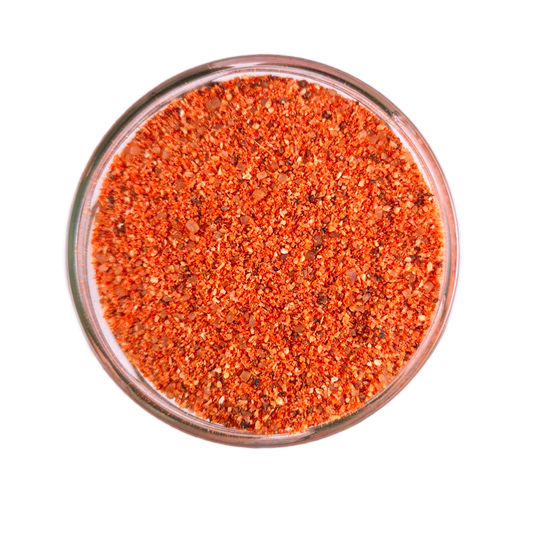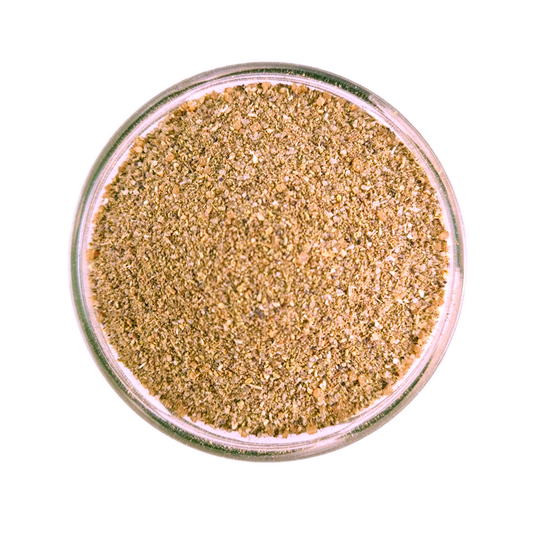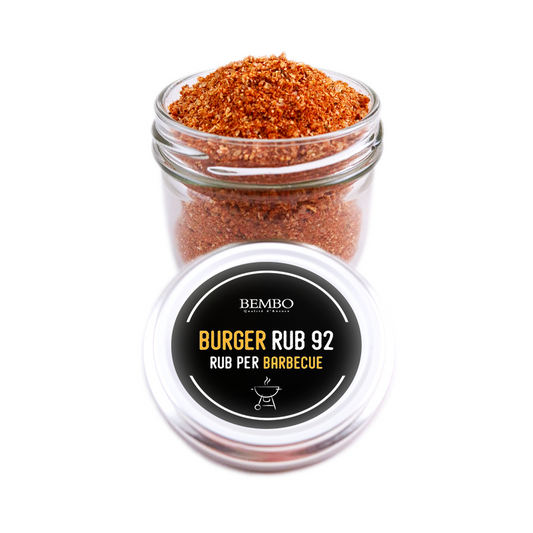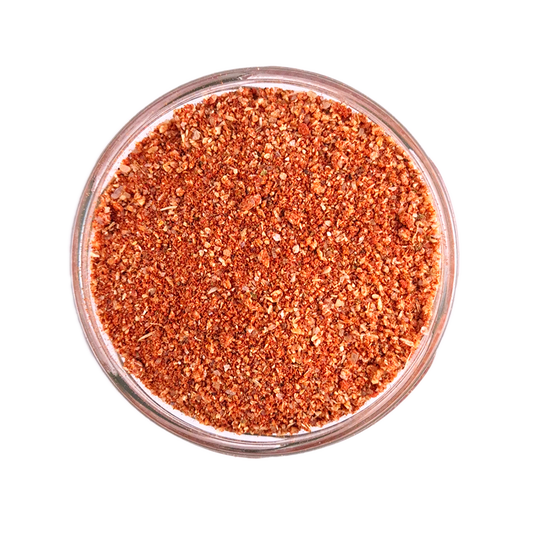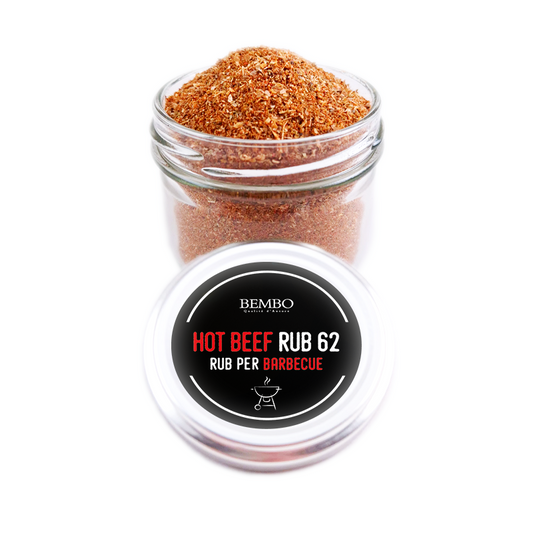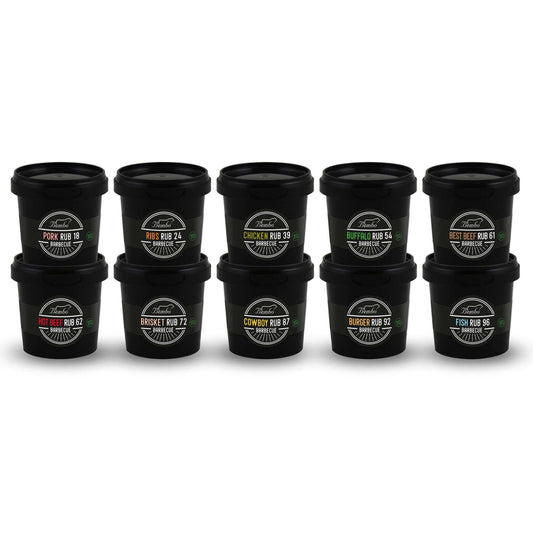-
Rub for Pork Ribs - Ribs Rub 72
Regular price From €9,50 EURRegular priceUnit price per -
Rub for Brisket - Brisket Rub 72
Regular price From €9,50 EURRegular priceUnit price per -
Rub for Pulled Pork - Pork Rub 18
Regular price From €9,50 EURRegular priceUnit price per -
Chicken Rub - Chicken Rub 39
Regular price From €9,50 EURRegular priceUnit price per -
Beef Rub - Best Beef Rub 61
Regular price From €8,50 EURRegular priceUnit price per -
Rub for Buffalo and Bison - Buffalo Rub 54
Regular price From €8,50 EURRegular priceUnit price per -
Minced Meat Rub - Burger Rub 92
Regular price From €8,50 EURRegular priceUnit price per -
American BBQ Rub - Cowboy Rub 87
Regular price From €8,50 EURRegular priceUnit price per -
Rub for Spicy Beef - Hot Beef Rub 62
Regular price From €8,50 EURRegular priceUnit price per -
Flavored Salt Flakes Assortment - BBQ Salt Flakes Pack
Regular price €18,00 EURRegular priceUnit price per -
Great Rub Tasting for Barbecue
Regular price €68,00 EURRegular priceUnit price per -
Assortment of Barbecue Rubs - Starter Pack
Regular price €42,50 EURRegular priceUnit price per -
Make Your Own Rub - DIY RUB N. 1 - SPOG
Regular price €22,50 EURRegular priceUnit price per -
Flavored Salt Flakes for Barbecue - Meat 18
Regular price €6,50 EURRegular priceUnit price per -
Flavored Salt Flakes for Beef - Roast 61
Regular price €6,50 EURRegular priceUnit price per
Rub for Grilled Meat
Learn more about meat rubs
Meat rubs are a must-have for anyone looking to take their cooking experience to the next level. These blends of spices and herbs , applied directly to the surface of meat, play a crucial role in enhancing its flavor and creating a delicious, crispy crust during cooking.
The importance of rubs lies in their ability to transform simple cuts of barbecue meat into succulent and flavorful dishes, enriching each bite with a complexity of flavors that range from sweet to savory, from spicy to smoky. Rubs are particularly popular for barbecue , but are equally effective in baking , making them a versatile ally in the kitchen.
The best cuts of meat for rubs
When it comes to using meat rubs, choosing the right cuts and types of meat is crucial to getting the most flavor and texture. Certain cuts of red meat lend themselves particularly well to the application of rubs, due to their texture and fat content.
- Beef Ribs : Beef ribs are perfect for rubs due to their high amount of fat and connective tissue, which melts away during slow cooking, making the meat tender and flavorful.
- Brisket (Brisket): This cut of beef, known for its long cooking times , absorbs the flavors of rubs beautifully, developing a flavorful outer crust and a succulent interior.
- Beef Rib Eye : The marbling of fat in this cut combines well with rubs, creating a crispy crust and a soft, flavorful interior .
- Pork Spare Ribs : Pork is excellent for rubs, as the fat and connective tissue renders out, making the meat extremely tender .
- Pork Shoulder : This cut is ideal for pulled pork . The long cooking time allows the rubs to penetrate deeply, enriching every bite with flavor.
- Chicken Thighs and Drumsticks : These white meat cuts, fattier than the breast, retain rubs better and remain juicy during cooking.
- Chicken Wings : Wings are ideal for spicy and smoky rubs , perfect for grilling and barbecues.
How to Use Meat Rubs
Meat rubs are blends of spices that are essential for enhancing the flavor and texture of meat preparations. The choice of rub depends on the type of meat and the desired result.
- Dry Rub : Dry blends of spices, perfect for creating a crunchy crust.
- Wet Rub : Combinations of spices and herbs with wet ingredients such as oil, vinegar or mustard, ideal for marinating and adding moisture to meat.
Before applying the rub, it is important to prepare the meat properly: remove any excess fat or skin and pat the meat with paper towels to remove surface moisture , which will help the rub adhere better.
Rubing your meat is a crucial step to ensure the flavors penetrate properly. Here’s how to do it:
- Amount: Use a generous amount of rub, making sure every part of the meat is well covered.
- Massage: Massage the rub into the meat using firm motions, making sure the spices are evenly distributed and penetrate lightly into the surface.
- Rest: After applying the rub, let the meat rest for at least 30 minutes at room temperature or, preferably, in the refrigerator for a few hours or overnight. This allows the spices to penetrate the meat.
Cooking Meat with Rub
Cooking is another key step to getting the most out of your rub. If you’re using a grill or barbecue, cook the meat over medium-high heat to seal in the juices and create a crispy crust. Then lower the heat to slowly cook the inside.
For oven cooking, preheat the oven to a high temperature for the first few minutes of cooking, then lower the temperature to allow for even cooking . Instead, for an intense, smoky flavor, use slow, low-temperature cooking with the addition of aromatic woods.
Be sure to check the internal temperature of the meat with a cooking thermometer to ensure it is cooked to perfection. Here are the recommended internal temperatures for various types of meat:
- Beef (medium): 60-63°C
- Pork: 70°C
- Chicken: 75°C
After cooking, let the meat rest for at least 10-15 minutes before carving. This allows the juices to redistribute, making the meat juicier and more flavorful . Cut the meat against the grain for a more tender texture and serve immediately. Accompany the meat with sides that enhance its flavors, such as grilled vegetables, baked potatoes , or fresh salads.



